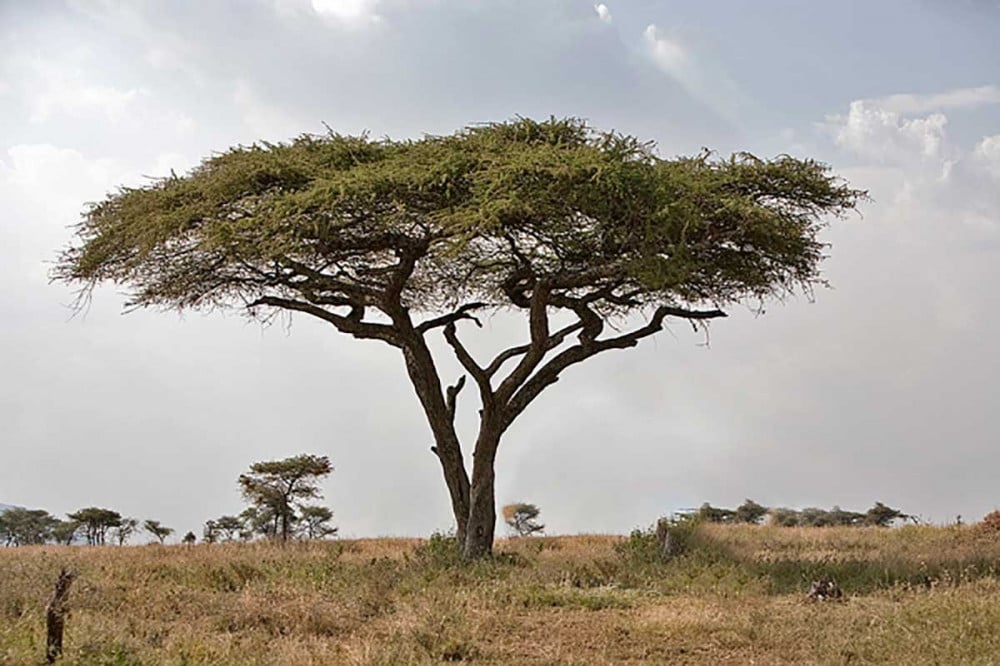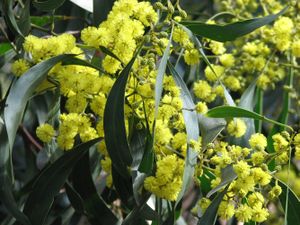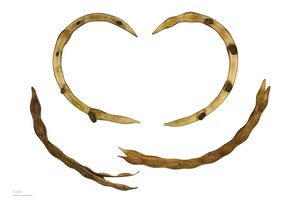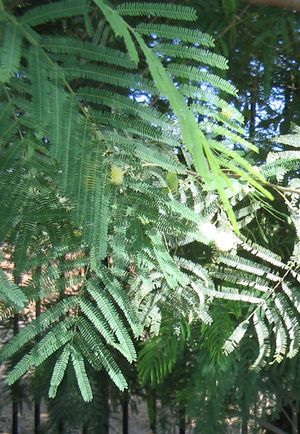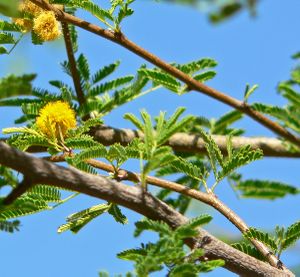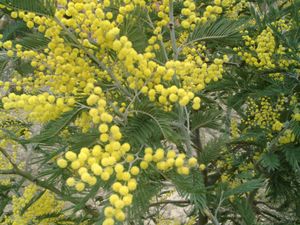Acacia (or acacia or acacia , Acacia Bark) is a thorny plant that has a degree of toxicity and is characterized by long thorns. Name of a huge group of plants belonging to the pea and bean family. They are sometimes called mimosas. Acacia grows and reproduces in most warm countries; It rarely grows in hot, dry regions to a size larger than that of a bush. But it can grow into a large-trunked tree in regions with abundant water. The acacia plant grows quickly but does not live long. The walnut stalk, a type of acacia, is the emblem of Australia, and is used as the background for the coat of arms.
The genus Acacia had approximately 1,300 species , about 960 of which are native to Australia, and the remainder distributed around the warm-temperate regions of the northern and southern hemispheres, including Europe, Africa, South Asia , and the Americas (see list of Acacia species . However, in 2005, The genus was divided into five separate genera under the tribe " Acacieae ". The genus Acacia ( sensu stricto ) retained the majority of Australian species and a few tropical species in Asia, Madagascar , and the Pacific Islands . Most of the species outside Australia, and a few Australian species, were reclassified as Vachellia and Senegalia.The other genera, Acaciella and Mariosousa , each comprise dozens of species from the Americas.
label
Talh tree near the end of its distribution range in the Negev Desert, southern Palestine.
Golden acacia, the national flower of Australia .
Acacia, an ancient Egyptian name, and its Arabic synonyms include acacia, acacia, Umm Ghilan, Daylam, Salam, Samur, Siala, Talh, and from it the name: Talha, Katr, Kad Hindi, opposite the binary name (Acacia Katacho).
Category
In more than 1,300 species of acacia, the classical restriction is not morphological . This discovery led to the division of acacia into five genera, along with a controversial remodeling of the genus to include the Australian species rather than the native African species, in exception to the traditional rules of priority requiring ratification by the International Botanical Congress.
The decision was controversial, and debate continued, with some taxonomists (and many other biologists) deciding to continue using the traditional restriction of the genus Acacia sensu lato , for now at least, contrary to decisions taken twice in a row by the International Botanical Congress. division of the genus, the traditional species of African acacia are presently present in the genus Vachellia and Senegalia , and some American species are found within the genus Acaciella and Mariosousa , and the majority of the species within the genus Acacia are still confined
The Queensland botanist Les Pedley proposed the genus Phyllodineae as a renaming of the genus Racosperma and popularized the binary names.
In colloquial expression, the term acacia is sometimes applied to the species included in the genus Robinia , which are also in the family pea . Robinia pseudoacacia , the Native American species known locally as the black locust, is sometimes called a "false acacia" in cultivation within the United Kingdom and throughout Europe .
Geographical distribution
The leaflets and sepals are often provided with swellings that perform the movements of sleep and wakefulness. The ears are usually spiky. The genus includes about 1,200 species originating in the tropical and subtropical regions of Africa and Australia, represented in the Arab world by spontaneous and other species cultivated for their gum, which has medicinal and nutritional uses, and its bark rich in tannin compounds used in tanning, and for the wood of some of its types that is suitable for making furniture. Some of them are grown for the beauty of its flowers or for the goodness of its fragrance.
Acacia is one of the most famous trees that make up the vegetation cover in the Arab world, represented by more than 30 species of eastern African origin, and this is what called for the overlapping of the naming transmitted for most of its types. Most of the acacia species are spread in the southwest of the Arabian Peninsula, and our information is still limited about these species, but we have more information about the acacias of Egypt, Sinai, Palestine, Iraq and southern Iran.
the description
Most acacias have bright yellow flowers with a pleasant smell, and some have white flowers. On some plants, the very small flowers are collected in whole balls. Some acacia plants have fern-like leaves, while others have a broad, flat stem that looks like a leaf and does the same job as a leaf. Some acacia plants grow sharp thorns, which in the southwestern United States are called cat's claws. A Mexican tree called the oxhorn acacia produces paired thorns like the horns of a herd bull. About 450 species of acacia grow in different warm regions of the world.
The acacia plant has a heavy, strong wood, and its flowers give off the fragrance. The bark of some trees in Australia gives tannic acid, and it is used in the leather industry. Others in Africa give a useful gum known as gum arabic. Acacia trees in India and Southeast Asia produce cachu, a substance used as a dye for clothes.

